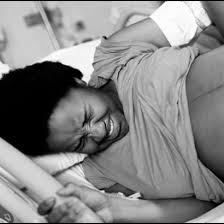It stated that the guide would help skilled health personnel to provide woman-centred, safe and effective care and to optimise the outcome and experience of childbirth for every woman and baby.
“The tool promotes a person-centred approach to monitoring a woman’s and her baby’s health and well-being from active first stage of labour to end of second stage of labour.
“This creates a positive feedback and decision-making loop, as health personnel are encouraged to regularly:assess the well-being of the woman and her baby; record their observations; check for signs that breach thresholds for health and well-being as labour progresses and plan what care may be required, in consultation with the woman.
“The guide and manual recognise that every birth is unique – from a woman’s personal experience of care, to the speed at which her labour progresses”, WHO said.
Commenting on the tool, medical officer in the WHO Department of Sexual and Reproductive Health and Research, Mercedes Bonet, said the tool would enhance relationship between women and health workers.
Bonet said, “The new WHO Labour Care Guide strengthens the relationship between women and their healthcare providers during labour and childbirth, improving both individual experience and clinical outcome.
“It is a practical tool for a new era of maternal health, where women’s values and preferences are at the centre of their own care.
“The new tool revises and replaces the traditional WHO partograph, a labour monitoring tool which is now inconsistent with the latest evidence about labour duration, triggers for clinical interventions and the importance of respectful maternity care.
“Many women do not experience a labour that fits the expected rate of the original WHO partograph. For instance, there is no evidence supporting the use of a cervical dilatation rate of 1 cm/hour as a screening tool to trigger medical interventions or referral.
“The guide includes updated, evidence-based reference ranges of labour progress. By recording and reviewing their observations against these references, health personnel are encouraged to think critically, avoid unnecessary interventions and act on warning signs.”
Bonet noted that the recognition that every birth is unique is now a cornerstone of the 2018 WHO recommendations on intrapartum care for a positive childbirth experience.
source: Punch

 The World Health Organisation has launched a new Labour Care Guide to reduce complications during labour and help every woman have a positive childbirth experience. According to WHO, over one third of maternal deaths, half of stillbirths and a quarter of neonatal deaths result from complications during labour and child delivery.
The World Health Organisation has launched a new Labour Care Guide to reduce complications during labour and help every woman have a positive childbirth experience. According to WHO, over one third of maternal deaths, half of stillbirths and a quarter of neonatal deaths result from complications during labour and child delivery.




